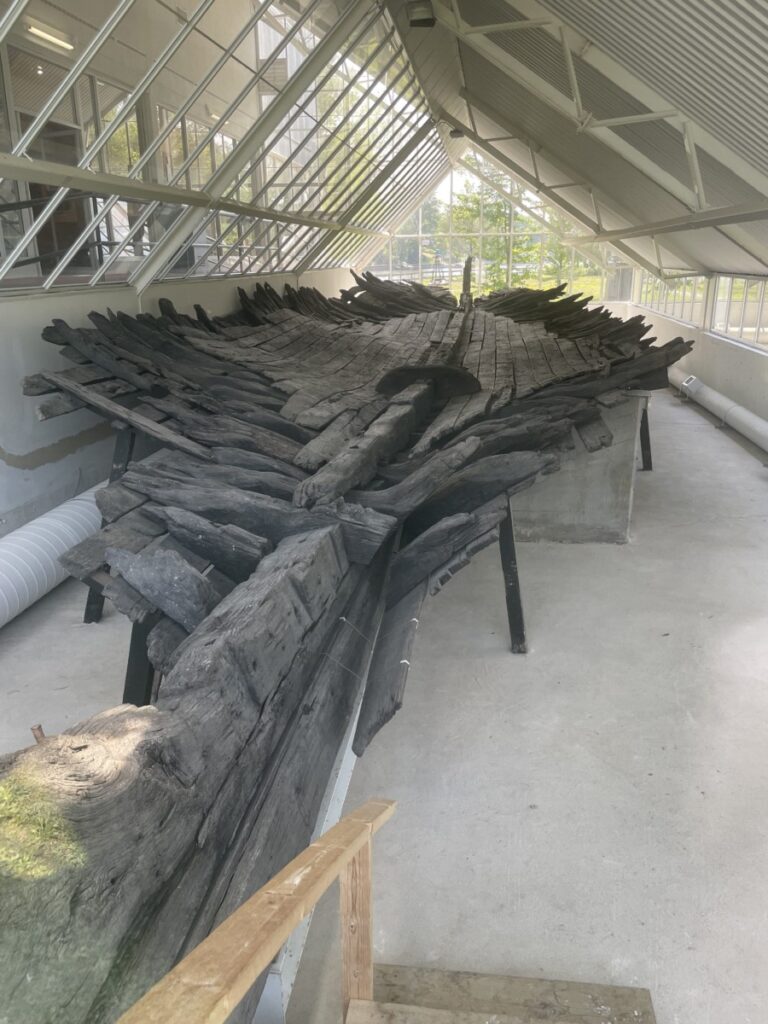
August 2025
When most people think of the War of 1812 battlefields, they think of areas from the St. Lawrence River, to Lake Ontario, to Lake Erie. Many will forget that Lake Huron and Georgian Bay also saw action during the war.
Wasaga Beach is now a beach resort community, but during the War of 1812, it was a link in the supply route from Fort York (now Toronto) and Fort Michilimackinac, on the northern tip of the lower peninsula of the present-day state of Michigan. It was also the site of a notable battle on 14 August 1814. Taking part in that battle, was His Majesty’s Ship (HMS) Nancy.
HMS Nancy was originally a civilian supply vessel that was taken into the British government service. The 80-foot long ship featured two rakes masts, square topsails and for-and-aft mainsails, was built from white oak and eastern red cedar, capable of carrying around 350 barrels of cargo. Armaments included two 2-pounder brass cannons mounted on the deck.
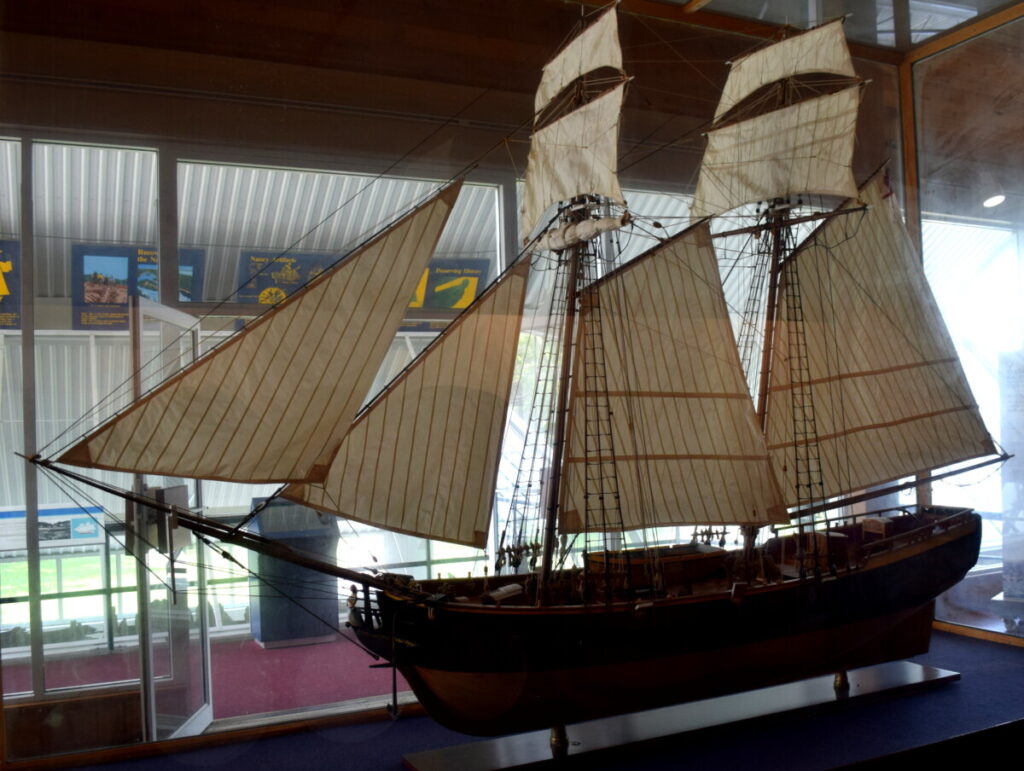
In July 1814, an American force left Detroit, intending to attack and recover Fort Mackinac, an American fort that had been taken by British forces in 1812, at the start of the war. The American forces failed to recapture the fort, but they had learned that HMS Nancy was on a supply mission in Nottawasaga Bay.
Captain Arthur Sinclair led three American vessels, Niagara, Scorpion and Tigress, into Nottawasaga Bay, in search of HMS Nancy. Lieutenant Miller Worsley, commander of HMS Nancy, got word that the Americans were looking for his ship, which was getting ready to sail back to Mackinac with 300 barrels of flour, bacon and other rations. As a result, Worsley had HMS Nancy towed 2 miles up the Nottawasaga River, where he hastily built a blockhouse, defended with two 24-pounder carronades and a 6-pounder gun and a force that consisted of 21 sailors, 23 Ojbwa warriors and 9 French-Canadian voyagers.
Unfortunately, the Americans, who believed that HMS Nancy was still out on the lake, accidentally discovered Worsely’s position when they embarked some soldiers on wood-cutting detail. Sinclair sent three companies of American regular infantry, supported by a 5.5-inch mortar and the guns of Sinclair’s ships, to attack Worsley’s position. Realizing his perilous position, Worsley was forced to scuttle his ship to prevent it from being captured. Worsley rigged the ship and blockhouse with explosives and set them alight, after which he and his crew and Native allies escaped into the woods.
The Americans blocked the mouth of the river with trees and debris, after which Sinclair and his crew sailed back to Detroit. He left two gunboats on the lake, Scorpion and Tigress, under the command of Lieutenant Daniel Turner, to prevent British and allied ships from getting supplies to Fort Mackinac.
Seizing an opportunity to evade the Americans, Worsley and his men removed the obstructions and sailed to Fort Mackinac in a large canoe. On 31 August, after paddling and rowing for 360 miles, Worsley happened upon the gunboats, who were unaware of Worsley’s presence. Backed-up by soldiers from Fort Mackinac and native warriors led by Chief Assiginack (Black Bird), Worsley subsequently ambushed and captured the American gunboats in what became known as the Engagement on Lake Huron.. The Americans suffered 6 killed and 6 wounded, while the victorious British suffered 3 killed and 9 wounded.
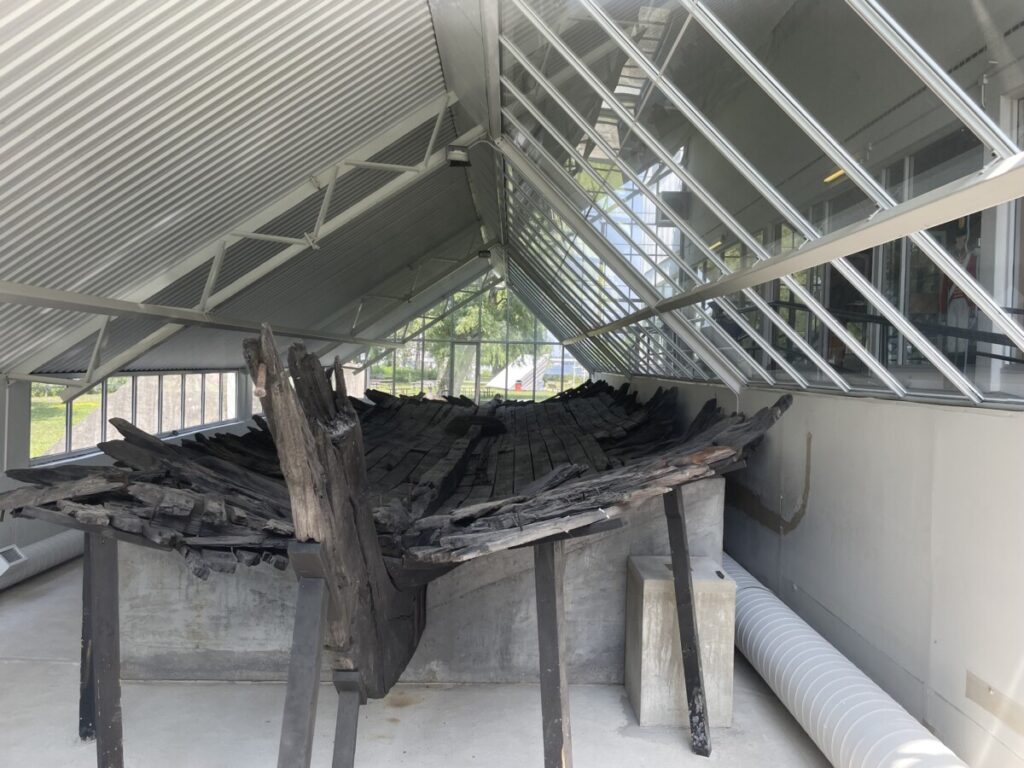
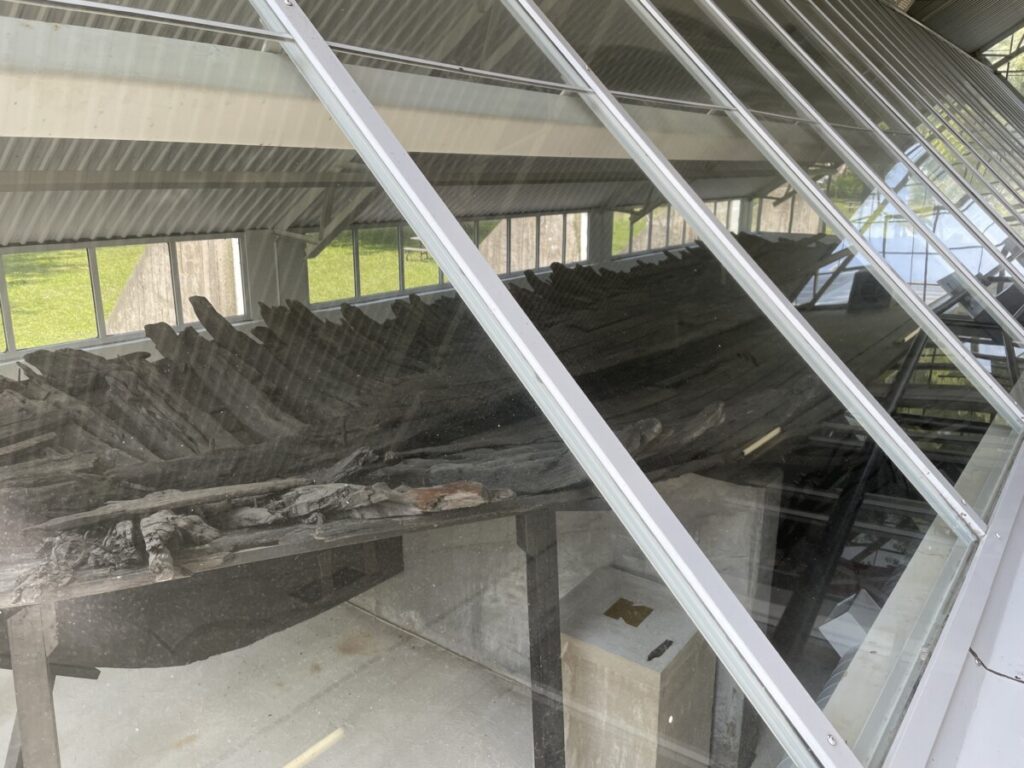
What remained of HMS Nancy settled to the river’s bottom. Over the decades, an island slowly developed around the sunken hull of HMS Nancy. This island would come to be known as Nancy Island.
After being forgotten for decades years, the wreck of HMS Nancy was re-discovered in July 1927 and raised to form the centrepiece of the Nancy Island Museum. The hull was placed a short distance from where it had been found. In 1928, the first Nancy museum was opened.
The remains of HMS Nancy can be seen in a climate-controlled chamber, built in 1968. Visitors to Nancy Island will find a museum, theatre and lighthouse, all telling the story of HMS Nancy and the story of Wasaga Beach and the town’s contribution to the War of 1812 and the early years of Upper Canada.
Amongst the artifacts featured in the museum are Nancy’s figurehead, ship’s cutlery and numerous personal artifacts that were recovered from both the bottom and the banks of the Nottawasaga River.
Nancy Island Historic Site is administered by Ontario Parks, a branch of the Ontario Ministry of the Environment. The island and museum are open daily during the summer months, and weekend in the fall.
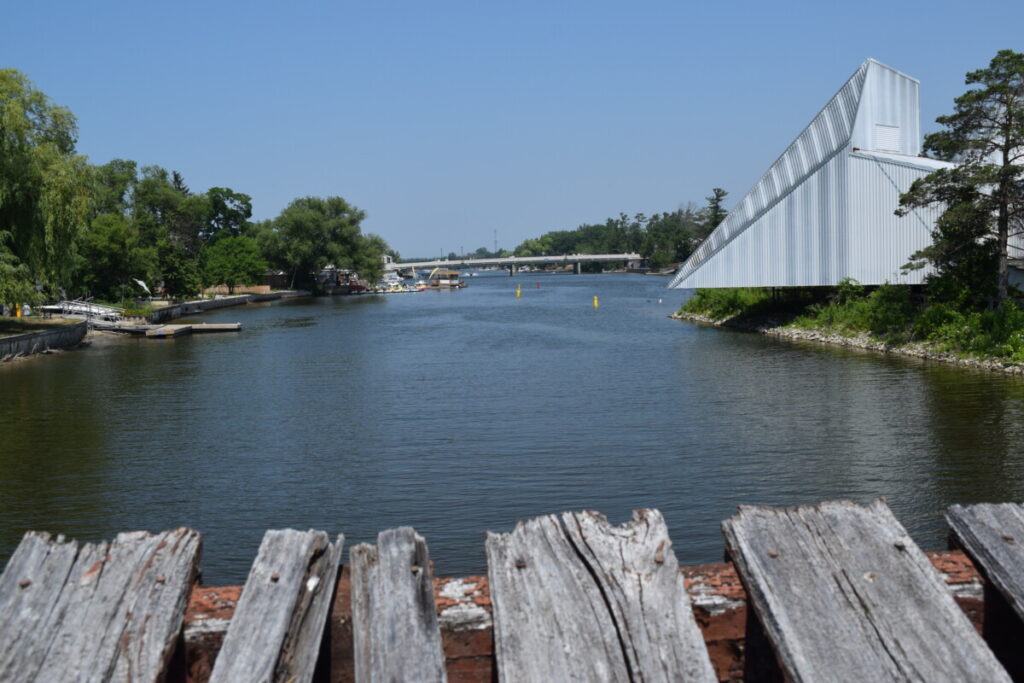
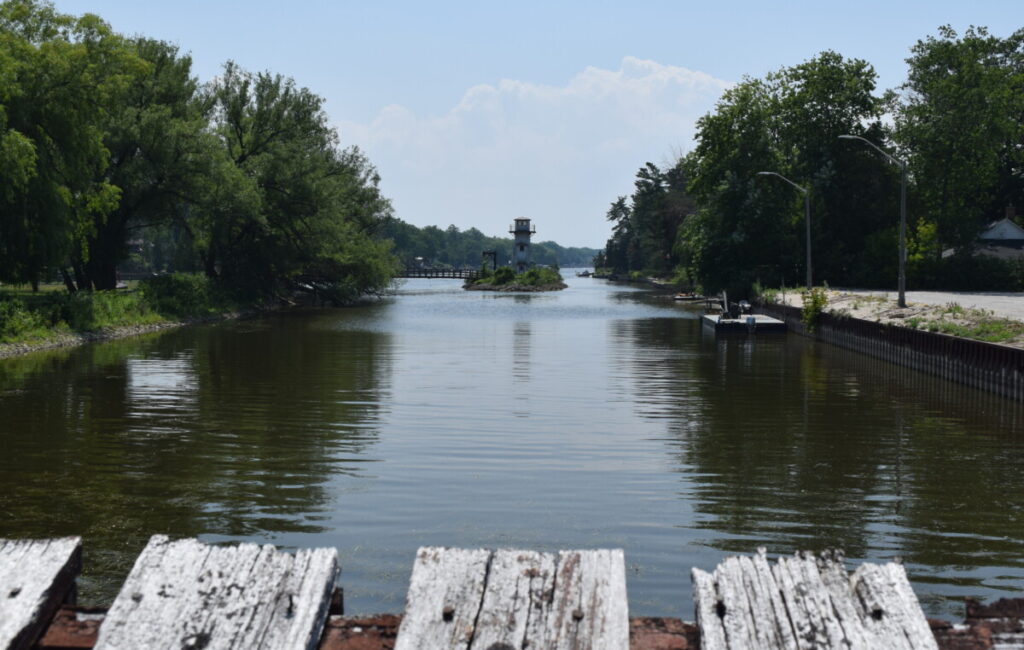

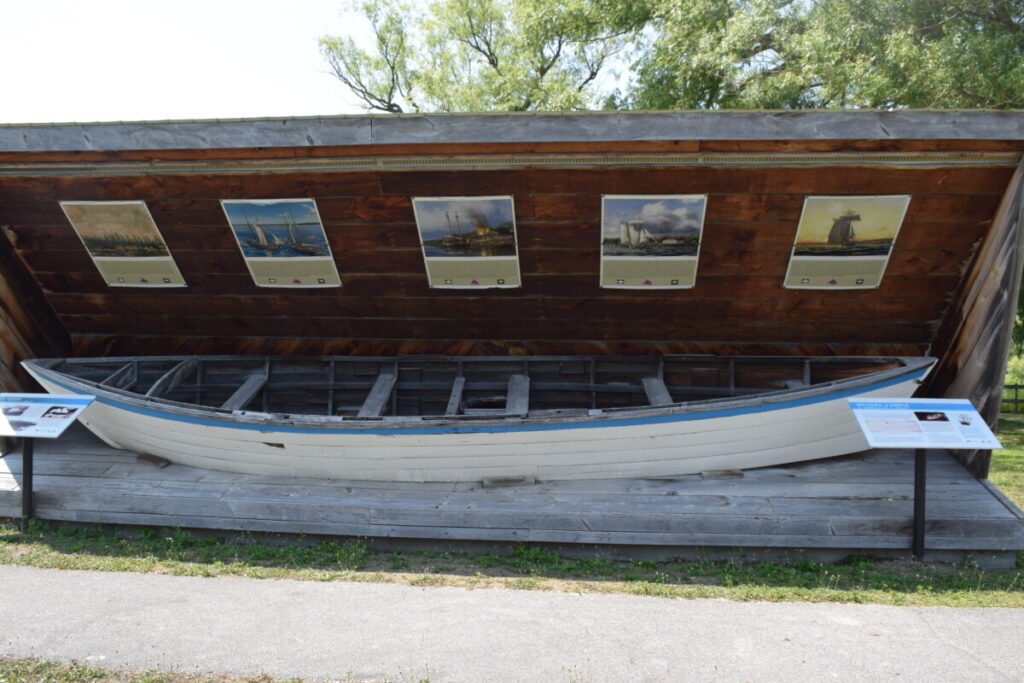
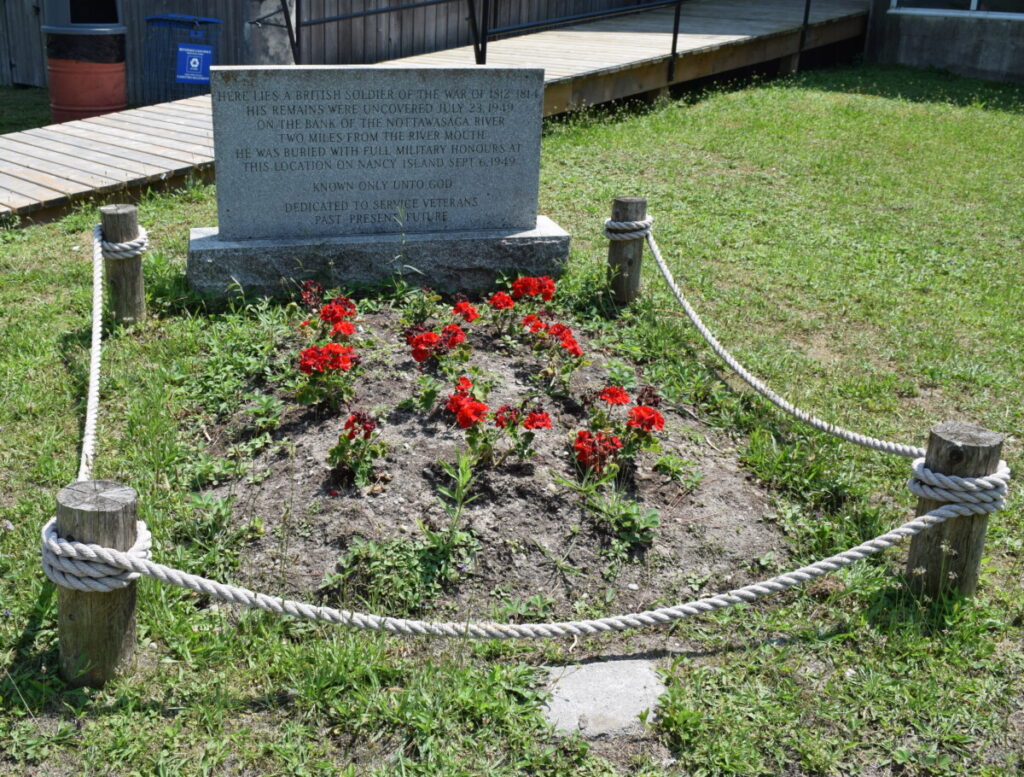
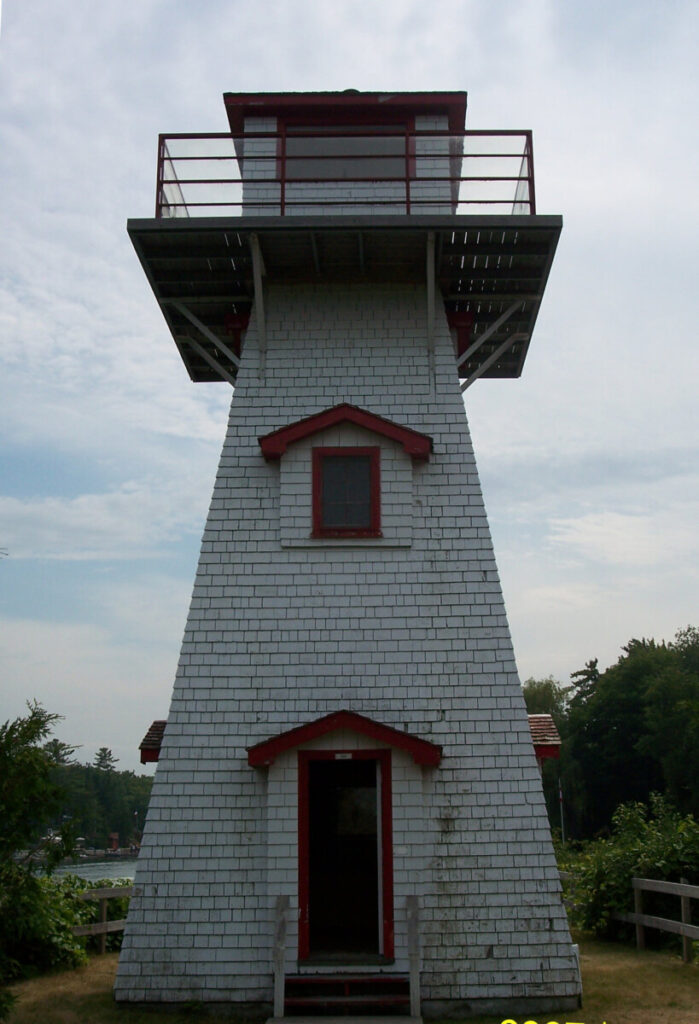
Sources: Nancy (1789 ship) – Wikipedia, Nancy Island Historic Site, Fort Michilimackinac – Wikipedia, Arthur Sinclair – Wikipedia.



